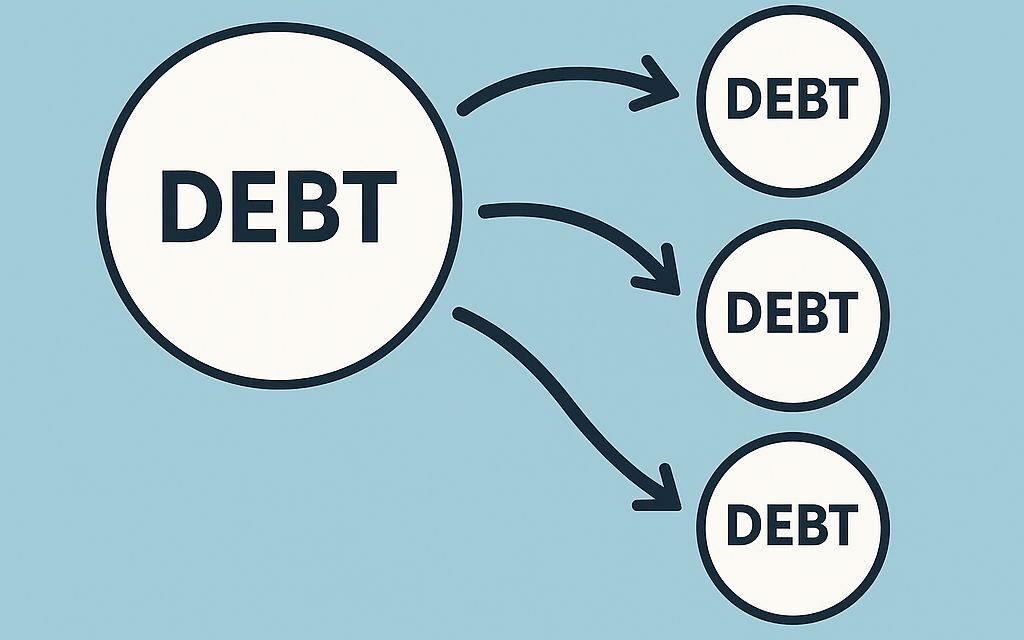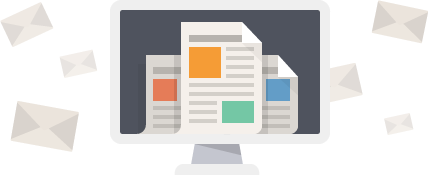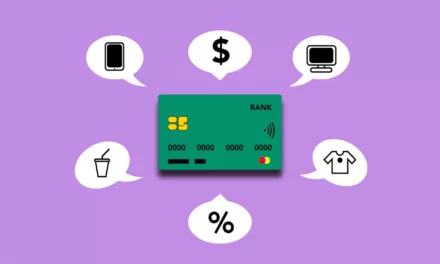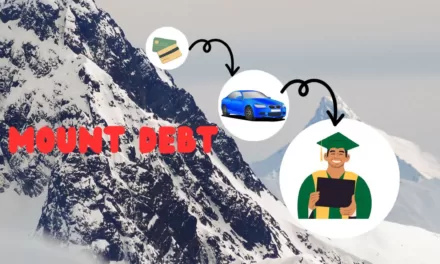In this post, we will learn how to eliminate credit card debt using the snowball method. But first, our disclosure:
Disclosure: This post may contain affiliate links, meaning we earn a commission on purchases made through those links at no extra cost to you. As an Amazon Associate, I earn from qualifying purchases.
Disclaimer: The content on this site is for informational and educational purposes only and does not constitute financial, investment, legal, tax, or any other professional advice and should not be used as a substitute for professional advice. For more details, read our full Disclaimer.
Credit Card Debt: A Trillion-Dollar Problem
Credit card debt can feel like a mountain that only gets steeper with time. Minimum payments barely scratch the surface, and high interest rates of 20% or more make it harder to catch up. If this is you, then you are not alone.
According to the consumer debt data released by the Federal Reserve Bank of New York for the first quarter of 2025, total credit card debt in the United States has reached a staggering $1.18 trillion. With approximately 130 million households in the country, this results in an average credit card debt of around $9,000 per household.
If you’re feeling overwhelmed by credit card debt and don’t know where to start, there’s a proven method that can help you build momentum and take control of your credit card debt: the debt snowball method.
Let’s break down exactly what the snowball method is, how it works, and why it is such a popular strategy for getting out of debt. Who knows? It might just be the solution you have been looking for.
What Is the Debt Snowball Method?
The Debt Snowball Method is a debt repayment strategy in which you focus on paying off your smallest debt first, regardless of interest rate, while making minimum payments on all other debts.
Once the smallest debt is paid off, you take the amount you were paying on it and roll it into the next smallest debt. Over time, with each card you pay off, your payments grow larger like a snowball rolling downhill, giving you momentum and motivation.
Personal finance expert Dave Ramsey popularized the Debt Snowball Method in his book “The Total Money Makeover.” He continues to promote it on his long-running radio show and podcast “The Ramsey Show.”
Why the Debt Snowball Method Works
The Debt Snowball Method isn’t just about math; it’s about behavior. Seeing quick wins early on keeps you motivated, which increases your chances of sticking to the plan and ultimately becoming debt-free.
Here’s why it’s effective:
- It builds positive momentum
- You get quick emotional wins
- It simplifies decision-making
- It keeps you focused
There are a lot of other plans out there, but many make paying off debt much more complex than it needs to be. In my view, the true strength of the Debt Snowball Method lies in its simplicity. There is no complex math involved, and you can write all your numbers down using only a pen and paper if you wish.
How to Use the Debt Snowball Method Step-By-Step
Step 1: List All Your Credit Card Debts
Write down every credit card you have, along with the amount you owe on it, including:
- The total balance
- Minimum payment
- Interest Rate
You can download our free Debt Snowball Tracker to help get you started.
Step 2: Sort By Smallest Balance
Set aside the interest rate for now and arrange your credit cards according to their balances, from smallest to largest.
You may be wondering why bother to list the interest rates, even though the Debt Snowball Method doesn’t take them into account. The reason is that seeing high interest rates written out, such as 20% or 30%, can provide extra motivation to pay down your credit card balances. There’s nothing quite like witnessing those rates to inspire you to take action!
Step 3: Pay minimums on all but the Smallest
Continue making the minimum payment on all credit cards except the one with the smallest balance. Also, just as importantly, don’t accumulate any more credit debt!
Step 4: Attack the Smallest Balance Aggressively
Devote every extra dollar you can find towards eliminating your smallest credit card debt. This could mean selling items you no longer need, such as old electronics, furniture, or clothing that’s just taking up space. Consider taking on a side gig to boost your income—perhaps driving for a rideshare service, freelancing your skills online, or even babysitting for neighbors.
Additionally, look for ways to cut back on everyday expenses. For instance, try cooking meals at home instead of ordering takeout. Every dollar you save can make a significant difference in paying down that debt more quickly.
Step 5: Roll That Payment to the Next Debt
Once your smallest balance is paid off, roll that payment into the next smallest debt. Let’s say:
- Your minimum monthly payment was $25
- You were able to add $100 extra per month to the minimum payment simply by eating out less
Take the $125 you were paying toward that credit card each month and apply it to the next smallest balance. Here is what it looks like:
- Your minimum monthly payment on your next smallest balance credit card is $50
- Take the $125 you were paying on the previous card and add it to the $50 minimum payment of the next card
- Now, instead of paying the $50 minimum monthly payment, you are paying $175 each month toward the card with the smallest balance. ($125 + $50 = $175)
As you can see, the debt snowball gets much bigger with each card you pay off. It’s a lot like building a snowman.
When making a snowman, it never ceases to amaze me how quickly a snowball can transform into a large boulder of snow simply by rolling it in the grass. The Debt Snowball Method works in a similar manner. As each debt is paid off, the debt snowball grows larger and larger until there is nothing left.
Step 6: Rinse and Repeat Until Credit Card Debt-Free
Each time you pay off a card, apply that minimum payment plus any extra dollars to the next smallest balance. Keep rinsing and repeating until you are debt-free. Eventually, that momentum wipes out even your largest debts faster than you thought possible.
Snowball Method Example
In the following scenario, your total credit card debt is $4,700 across three cards. The table below displays each debt, along with each card’s minimum monthly payment and payoff order.
| Credit Card | Balance | Minimum | Payoff Order |
|---|---|---|---|
| Card A | $500 | $25 | 1st |
| Card B | $1,200 | $50 | 2nd |
| Card C | $3,000 | $80 | 3rd |
Start by focusing on Card A, which has a balance of $500. Put every extra dollar you can toward paying it off, regardless of its interest rate. Once Card A is eliminated, take your full payment of $25, plus any additional money you can spare, and apply it to Card B.
As you eliminate each card, the amount you are able to apply to the next card increases. Now, instead of just paying the minimum of $50, you will make a payment of $75, plus any extras, each month for Card B. Once Card B is paid off, direct your combined payment of $75 and any extra dollars toward Card C’s minimum payment.
This strategy results in a total monthly payment of $155 toward Card C, plus any extra money you can contribute. By the time you finish paying off the last credit card, your initial payment of $25, plus extra dollars, will have grown into a substantial monthly payment of $155, plus any additional funds you can add. Your tiny snowball has turned into a giant boulder!
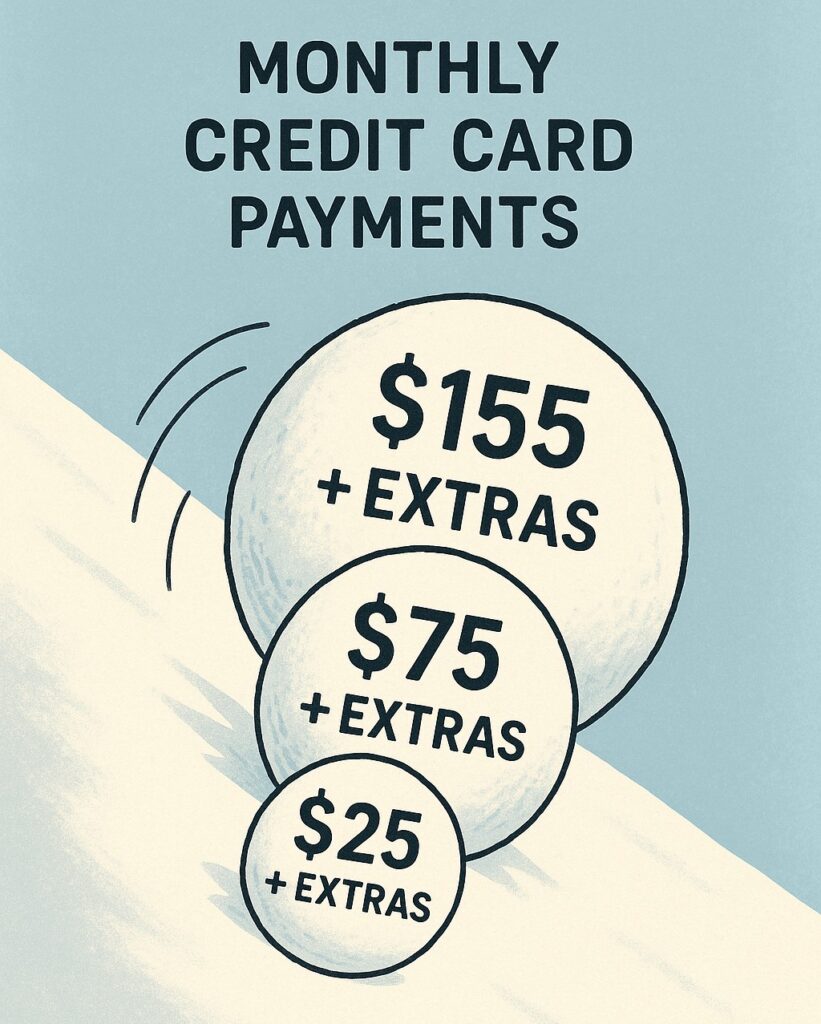
The Debt Snowball Controversy
The Debt Snowball Method, popularized by personal finance expert Dave Ramsey, encourages individuals to pay off their smallest debts first. While many people find this approach motivating, critics argue that concentrating on smaller debts instead of focusing on higher interest rates can lead to paying more over time. This method is known as the Debt Avalanche Method.
Debt Snowball vs Avalanche: Which Is Better?
From a purely mathematical standpoint, the Debt Avalanche Method is better. It focuses on paying off debt from the highest to the lowest interest rates. As a result, you will pay less in interest if you use this method.
However, in reality, not everyone makes financial decisions based solely on math. Americans would not have over a trillion dollars in credit card debt if they did.
Instead, for many, our relationship with money is driven by emotions. Therefore, motivation is more important than interest rates. The Debt Snowball Method helps people tackle debt by focusing on small debts first. By paying off these smaller debts, you can achieve quick wins that motivate you to pay off your credit card debt, creating a positive feedback loop.
So if motivation is your biggest challenge, the snowball method usually beats the avalanche method.
The bottom line is that the key to paying off credit card debt is to use a method that you can stick to. No matter how the math works out, if you can’t stick to it, it doesn’t matter.
Tips For Success
The following tips apply to any method you use while paying off your credit card debt.
- Stop using your credit cards while paying them off
- Set up auto-pay so you never miss a payment
- Track your progress visually or make a game out of it
- Celebrate with a small (inexpensive) reward as you reach debt payoff milestones. Maybe a small treat from the local bakery.
- Don’t go back to where you started.
Let’s look at these in more detail.
Stop and Set Up Auto-Pay
The most important thing to remember when paying off credit card debt is to stop using your credit cards. You can’t get out of debt if you continue spending money you don’t have at interest rates exceeding 20%.
Next, set up auto-pay on each credit card to prevent missing payments. The last thing you want is to incur late fees on top of high interest rates. From there, it is all about making things fun.
Don’t Forget to Have Fun
Many fail to pay off debt because it becomes a drawn-out, painful affair. Some people feel as though they have to deprive themselves of all pleasures. That’s a recipe for burnout. Therefore, making it fun will keep you motivated and engaged.
You can print out a donation tracker and fill it in each month as you pay off your credit card debt. Turn it into a game by assigning a dollar value to each block, with the finish line representing your total credit card balance.
As you progress, be sure to have fun and celebrate your achievements. Keep the celebrations simple and affordable, but choose activities you genuinely enjoy.
For instance, you could reward yourself with one of your favorite coffee drinks each time you pay off a credit card. Alternatively, treat yourself to something special from your favorite bakery for every $500 you pay off in credit card debt. The key is to set a dollar limit for your rewards, perhaps between $10 and $20, to ensure you don’t accumulate more credit card debt while celebrating your success!
Don’t Go Back
Finally, the ultimate tip is to avoid falling back into credit card debt after you’ve paid off your cards. If you struggle to control your spending, it’s best not to use credit cards at all. If you choose to use them again, make sure to pay off your balance in full each month.
In other words, never charge more than you can afford. You worked so hard to get out of debt, and the last thing you want is to end up in the same situation again.
Final Thoughts: Get Rid of Credit Card Debt for Good
The Debt Snowball Method isn’t a quick fix, but it’s a proven system to get out of credit card debt. It focuses on progress, not perfection, and that’s what creates real change.
This method involves listing your debts from the smallest balance to the largest, regardless of the interest rate. You focus on paying off the smallest debt first while making minimum payments on all other debts. Once the smallest debt is cleared, you shift your attention to the next smallest one, using the momentum gained from your previous success to propel you forward.
Begin with small steps and stay consistent. As you continue, what starts as a small snowball will grow into a giant boulder of snow, gaining strength and size. Before you know it, you’ll be amazed at how far you’ve come and how your persistent efforts can help you eliminate your credit card debt.

